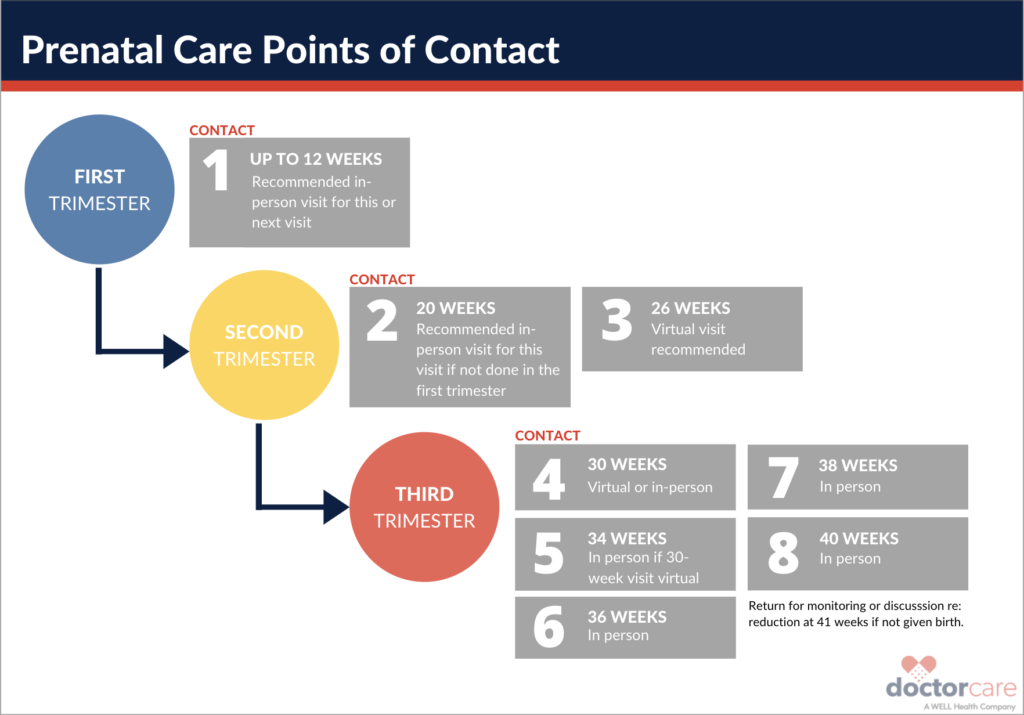With so many billing codes constantly changing, we know that billing can get confusing. We are finding that many physicians are confused by the complexity of prenatal care codes. Here is a breakdown of the latest updates on the prenatal care codes for MSP billing:
14090 – Prenatal Visit – Complete Examination
For a complete examination of your pregnant patient (usually conducted during the first visit), bill the fee item 14090. A physical examination is required so the visits must be done in person. If you cannot do the physical examination during the first visit, you can bill it at a subsequent prenatal visit when you see the patient in person and conduct the examination. This is billed only once per patient during their pregnancy.
14091 – Prenatal Visit Subsequent Examination
For subsequent examinations, you should bill fee item 14091.
- For uncomplicated visits, you can bill the fee item 14091 with a limit of 14 times per patient, per pregnancy.
- For complicated visits, you can also bill fee item 14091 but you can bill this as many times as required with no maximum limit.
If a patient is visiting for a condition not related to their pregnancy, the best practice is to bill the regular fee appropriate to the visit (for example, you can bill 00100 for a regular office visit).
We have created a new quick reference guide for easy access to information on these codes.
Additional Tips and Support for Prenatal Care in a COVID-19 World
COVID-19 has placed a lot of pressure and changes to the billing system in the past year. We have put together some recommendations and tips to stay up to date on your prenatal care billing.
Prenatal Care Points of Contact
To ensure that you are providing the best support to your patients given the circumstances, there are a few recommendations for contacting your patients:
- For low risk healthy women and pregnant individuals, you are required to provide 8 contacts during their pregnancy whether that is virtually or in person. Below is a visual of the recommended contacts during each trimester.

- For high risk women and pregnant individuals, it is recommended that you create an individualized care plan to determine the schedule of visits. High risk pregnant patients include those with obstetrical risks, fetal risks, medical comorbidities or psychosocial issues.
- Laboratory tests and ultrasound tests that are time-sensitive should still be completed and communicated on a timely basis.
Updated Forms from Perinatal Services BC (PSBC)
The codes 14090 and 14091 are to be filled in the updated forms provided by PSBC. As of November 1, 2020, PSBC has updated their three standard forms: the Antenatal Record, the Triage and Assessment Record, and the Labour and Birth Summary forms. Here is a summary of the major updates for each of them.
Antenatal Record Part 1 and Part 2
- Updated language respectful of gender identity, cultural status and ethnic identity, educational status, and the multiple ways in which individuals may identify themselves as a parent.
- Removed the menses cycle dating field and added ultrasound dates as the new practice for dating pregnancies.
- Updated language to the present pregnancy section to include various types of assisted reproductive technology used in a pregnancy as well as relevant travel documentation.
- Updated areas in the medical history section such as cardiovascular, endocrine, mental health, infectious diseases and immunizations
- TWEAK score field is removed and gender-based violence field is added in the lifestyle/concerns section.
To review the entire list of Antenatal Record Part 1 and Part 2 updates, download the PDF here.
Perinatal Triage and Assessment Record
- Updated areas in the background section, including the changes of placement of the Falls Risk Screen section and updated language to the “Purple Dot” point-of-care violence risk assessment to align with Provincial Health Services Authority Learning Hub.
- Maternal/Fetal Classification section was removed and classifications based on the Obstetrical Triage Acuity Scale (OTAS) were added to the triage section of the initial assessment.
- Updated History/Risk Factors to document RhIG dates, complementary therapy, and antenatal corticosteroids administration.
To review the entire list of Triage and Assessment Record updates, download the PDF here.
Labour and Birth Summary Record
- New fields added to the background section to document planned mode of delivery and VBAC eligibility.
- New and updated fields to the labour section, adding more options for detailed documentation.
- New and updated fields added to the birth section, including uterotonics, cord clapping and blood loss volumes.
- Revised time summary tables to accurately document duration of labour.
- New sections added to the fetal/newborn status for more thorough documentation.
- New sections added to the sign off sections to clearly indicate planned place of birth, care providers during labour and delivery, other care providers present at delivery and a check box for neonatologist in the consult to section.
To review the entire list of Labour and Birth Summary updates, download the PDF here.
Where to Access the new BC Perinatal Forms
Hard Copy
Paper forms are available to order. Please register or sign in on the online portal to order your forms.
Electronic version
Technical specifications of the electronic version are still under development. Primary care providers are asked to use the current form (PSBC 1582) for the time being. For details on when your EMR will be implementing the updated antenatal records, please contact your vendor.
Need help with your prenatal billing? We can help!



